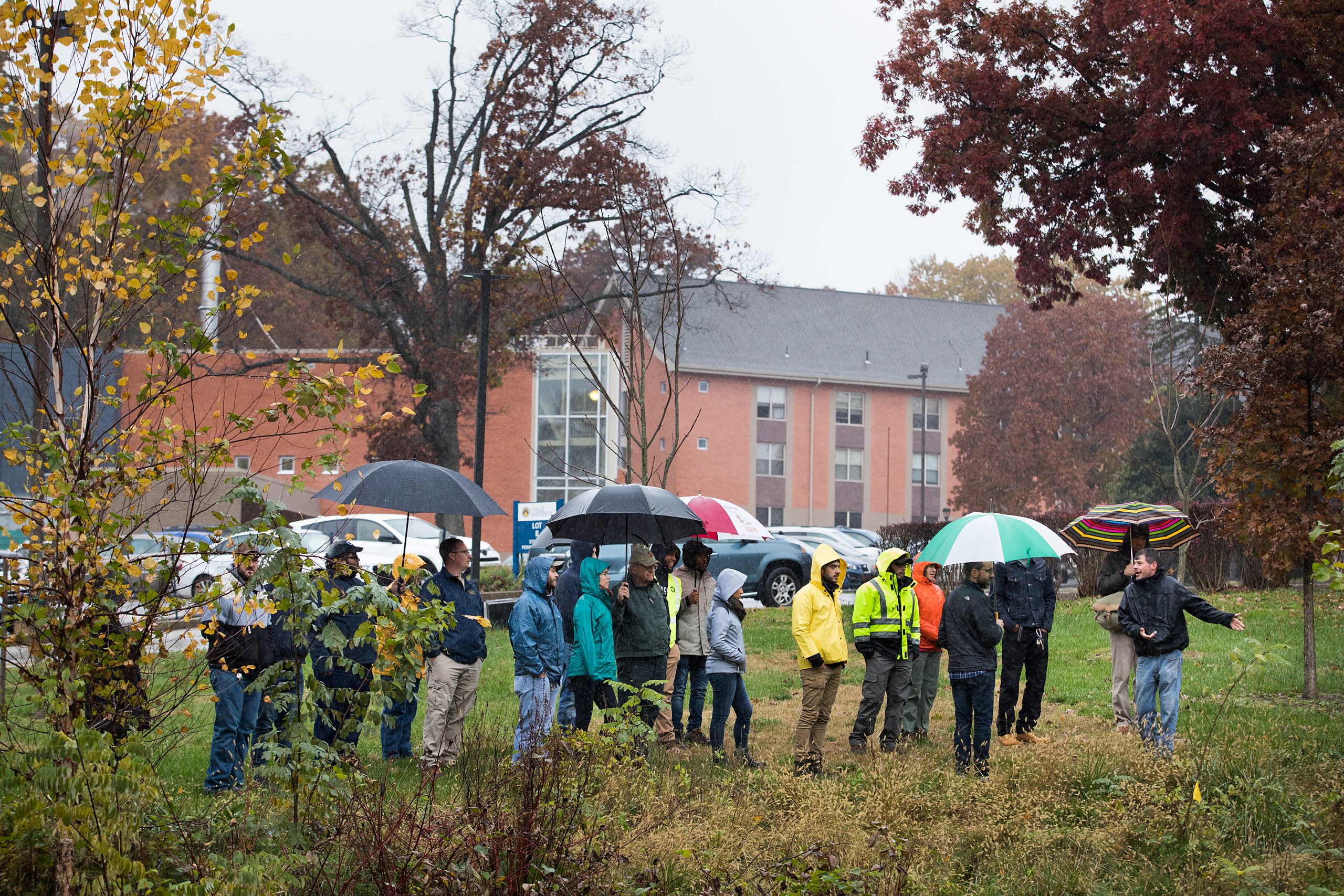
Dead or Missing Vegetation
Problem: A common complaint with green infrastructure systems is that vegetation looks unattractive, dead, or sparse. These issues often stem from a lack of proper maintenance. Missing vegetation can not only give green infrastructure a poor reputation, but can lead to pests, ineffective water quality treatment, and increased erosion.
Solution: Designs should incorporate a sufficient variety of plants to ensure biodiversity while maintaining a degree of simplicity. Biodiversity allows a system to maintain its effectiveness when certain species perform poorly. Simplicity allows maintenance crews to more easily identify intentional plantings from weeds. Additionally, soil profiles should be designed to support plant health. Regular soil testing will ensure that the system continues to thrive during establishment. Training maintenance crews on the plant maintenance is especially important for the long-term viability of a green infrastructure system. Proposed spacing of plants and seasonality must be take into account in the BMP design. These are living systems and different plants emerge and dieback at different times of year. Over reliance on a limited variety of species spaced several feet apart will jeopardize the year-round function and aesthetics of the BMP. Planting palettes composed primarily with grasses, a variety of perennials, and tight spacing to limit mulch will have better long-term performance.
